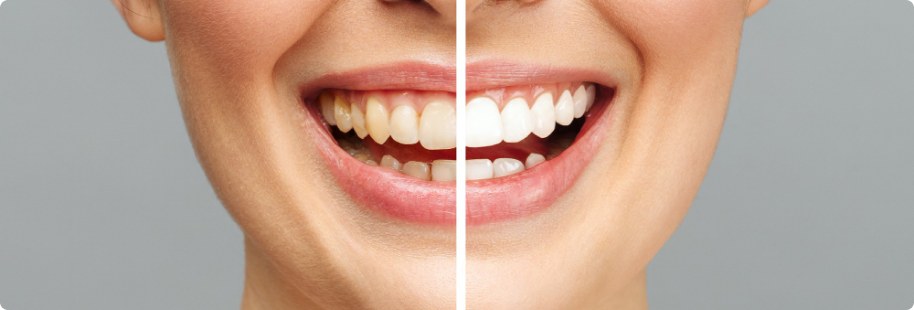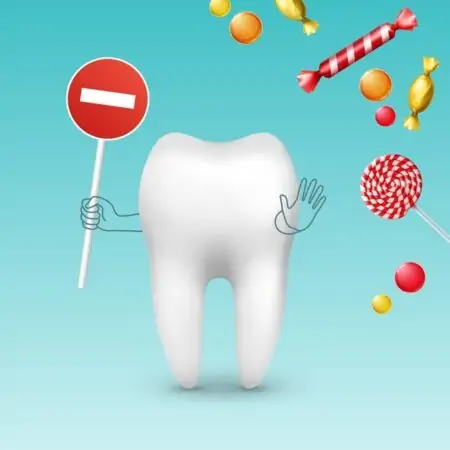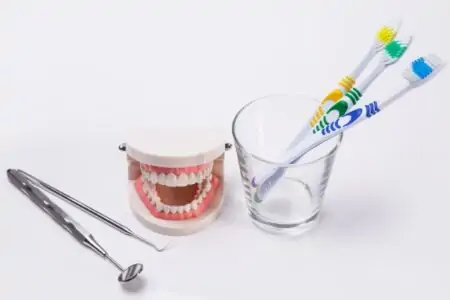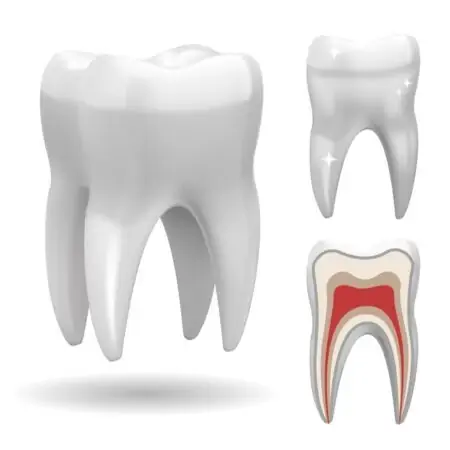Teeth Whitening Treatment
Tooth whitening is a very effective way of lightening the natural color of teeth without compromising the tooth surface in any way. The procedure can be done in one hour in the clinic with or without lasers. The cost of whitening depends on the existing color of the natural teeth. Darker teeth will require more number of visits to get the desired result. A professional cleaning is mandatory before tooth whitening This process cannot result in a complete change of color, but will lighten the existing shade of white. It is not advisable to whiten teeth for kids below 18 years and for pregnant or nursing women.

Laser teeth whitening treatment can be done only in the dental clinics exclusively. The difference with Lasers is improved effectiveness due to enhanced action of the bleaching material activated by the Laser. The concentration level of the bleaching material is also higher leading to a better result. Laser teeth whitening cost is more expensive and is recommended for individuals with dark to very dark teeth and those with discolored teeth due to continued nicotine usage.
Irrespective of the method of tooth whitening, the results are expected to last for up to 2-3 years if proper precautions are taken, Touch-ups may be required to maintain the same shade continuously. Certain food colorants and red wine can discolor whitened teeth.
Home Teeth Whitening Treatment
Home tooth whitening is a good alternative to in-office whitening, especially when you don’t have the time for a long dental appointment. Home whitening is indicated for mild discolorations and for touch up only. Dramatic shade change cannot be expected with Home Whitening. OTC products are available. Dentist recommended products provide better results but can be obtained from a dentist only.
Why Our Does Teeth Color Change?
The color of the teeth is perfectly white during childhood and it fades away with age as the mineral content deteriorates with time. Bacterial pigments, persistent medications like tetracycline, frequent consumption of tea, coffee, and other such colored liquids can lead to fading away of natural tooth color. Apart from this, fluorosis, enamel hypoplasia, the age of the tooth and tobacco are also responsible for the deterioration of color of the tooth.

Natural Ways of Teeth Whitening Treatment
Natural methods of tooth whitening are known to us for long, have passed down by our ancestors. Chewing gums, toothpaste, pulp of strawberries, apples, cherries and even lemons act towards making tooth whiter than before.

Some Natural Ways of Teeth Whitening
- Tooth colored fillings, crowns, bridges and veneers will not lighten when your teeth are bleached
- Teeth whitening toothpaste can make your teeth appear a little lighter by removing stains, but they do not actually bleach your teeth.
- Tooth whitening does not produce the same results on all types of teeth discoloration. Someone with yellow tinted teeth would probably have great results with bleaching while someone with gray tinted teeth might be disappointed because gray tinted teeth don’t bleach as well.
- Tooth sensitivity and gum irritation are common side effects of teeth whitening treatments. The sensitivity usually disappears within 24 hours of an in-office teeth whitening treatment
- If you have any cavities, they should be filled before you have your teeth whitened.
- Touch ups are usually needed to maintain your desired shade, depending upon habits such as smoking, drinking coffee and tea and eating certain foods which will stain your teeth.
- People with gum disease shouldn’t get their teeth whitened.
- It’s a good idea to have a dental cleaning prior to having your teeth whitened to remove surface stains.

Who Are Eligible for Teeth Whitening Treatment?
- The patient undergoing the procedure should not be less than 18 years of age as the patient might face sensitivity.
- Pregnant and lactating women should avoid such procedures to avoid the side effects.
What is the Procedure ?
- Dentist first cleans, scale and polish the teeth. Any surface stains and tartar are removed.
- Shade/Colour of the teeth is recorded before procedure to check progress.
- Area is prepared. Bleaching compound usually contains a high concentration of hydrogen peroxide.
- Dentist will places some form of protection around the gums so that only the teeth are exposed to the compound. This is to prevent burning of the soft tissue. Eyes should be protected.
- Whitening gel is applied directly teeth.
- Laser is activated.
- This allows the crystals contained in the gel to penetrate stains quickly.
- Whitening gel is washed off, the result is evaluated by taking a photograph or using a shade chart.
